
Getting Your Baby to Sleep in the Crib: Real Talk & Gentle Tips That Actually Work
Is the crib transition feeling impossible? You're not alone! A fellow parent shares gentle, practical ways (and troubleshooting!) to help your baby sleep safely in their own space.
Alright, mama (or papa!), let's talk cribs. You've maybe, just maybe, started emerging from that newborn fog. You've figured out the feeding thing (mostly), navigated those wild newborn sleep patterns, and perhaps even enjoyed a few moments of quiet. But now there's a new mountain to climb: getting your sweet little bundle to actually sleep in that crib.
Maybe your baby currently snoozes like an angel... but only when snuggled right next to you. Or perhaps they only drift off in the bassinet beside your bed, or after being rocked for what feels like an eternity. The idea of moving them to that seemingly vast, empty crib in their own room? It can feel like preparing for a space mission – daunting for everyone involved!
If you're here, scrolling desperately at 2 AM, wondering if your baby is destined to be a permanent fixture in your bed (or your arms), I feel you. Oh, how I feel you. I've walked that same floor, bounced that same baby, wondering how this crib thing could possibly work.
But here's the honest truth from someone who's been in the trenches: it is possible. You can help your baby learn to sleep safely and soundly in their crib. It won't happen overnight (wouldn't that be nice?), and it requires a hefty dose of patience and consistency, but you can absolutely get there. Let's walk through some gentle methods and real-world tips that can make this transition smoother.
Seriously Though, Why the Crib?
Before we get into the how, let's quickly remind ourselves why this transition is often recommended, even when it feels tough. Sure, those sleepy snuggles are precious, but moving to the crib has some big pluses:
- Safety is King (or Queen!): You've heard it before, but it bears repeating. The safest place for a baby to sleep unsupervised is on their back, on a firm, flat surface, in a crib or bassinet that's totally empty (no blankets, bumpers, pillows, nada). A safety-approved crib ticks all these boxes.
- Reclaiming Your Sleep Space: Okay, let's be real. Getting your bed back can be life-changing for your own sleep quality. And a better-rested parent? That's a win for everyone.
- Building Sleep Skills: Gently guiding your baby towards falling asleep in their crib helps them practice those all-important self-soothing skills. It's like sleep homework for babies!
- Routine, Routine, Routine: A consistent sleep space becomes a powerful sleep cue. Crib = sleepy time. It helps set that internal clock.
Timing is Everything... Kind Of
So, when do you take the plunge? There's no perfect answer, but the sweet spot often falls somewhere between 3 and 6 months. Here’s what to look for:
- They're Hulking Out of the Bassinet: Check the weight/height limits on your bassinet. If they're getting close, or starting to push up or look cramped, it's time.
- Sleep Science is on Your Side: Around the 4-month mark (hello, sleep regression!), baby sleep cycles start changing, becoming more adult-like. This can actually be a good window to introduce new sleep habits.
- Your Sanity Meter is Low: Is room-sharing or co-sleeping just not cutting it anymore? Are you ready for a change? That matters too!
- Clear Skies Ahead: Try not to start this during a major life upheaval – illness, teething nightmares, starting daycare, a big trip. Pick a relatively calm period.
Trust your gut. Watch your baby's cues. If it feels like the stars are aligning (or you're just desperate enough!), it might be go-time.
Operation: Crib Comfort - Setting the Scene
Think like a baby real estate agent. You want to make that crib the most appealing sleep spot on the block. Safety and comfort are your selling points.
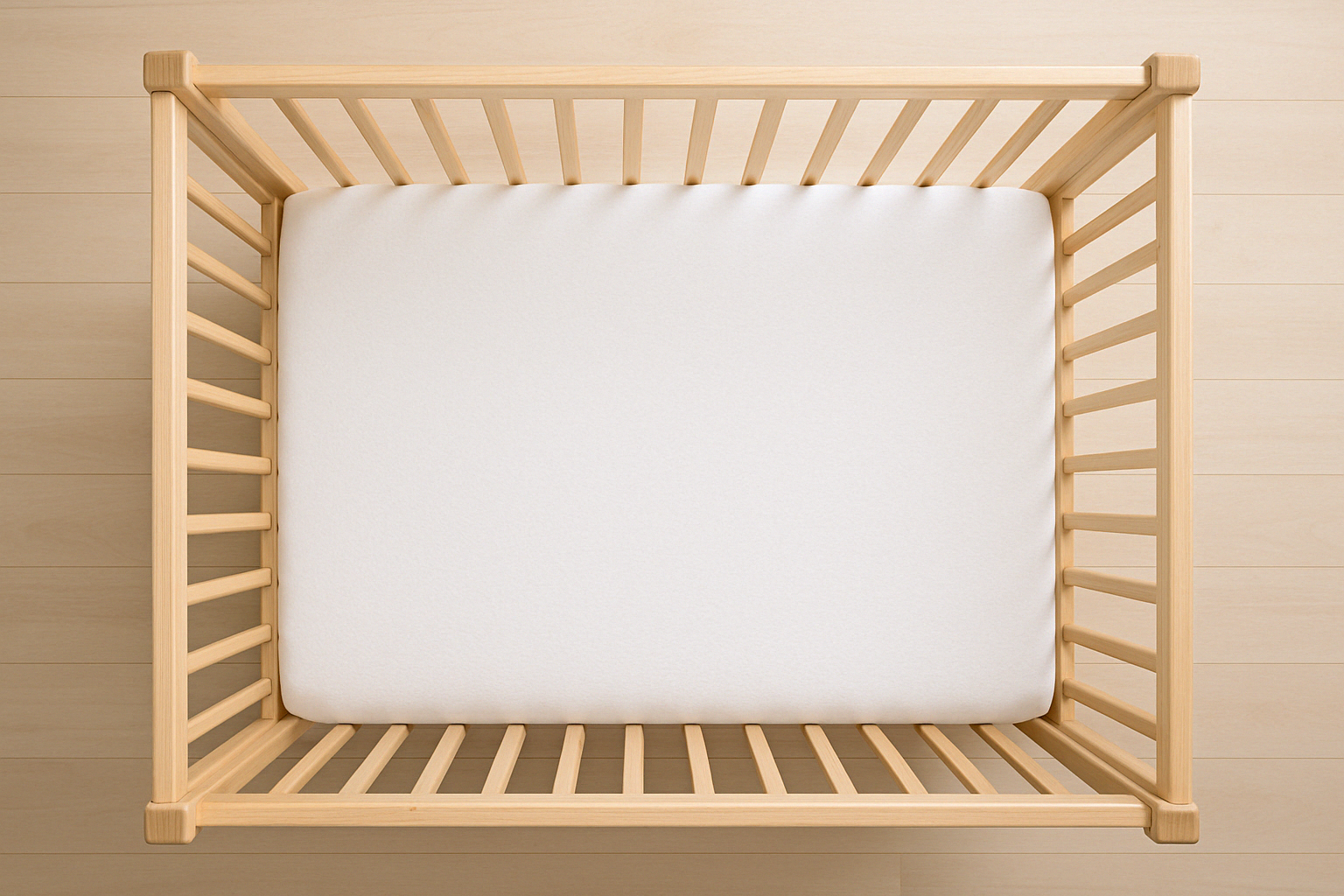 A safe crib is a boring crib! Firm mattress, fitted sheet, and absolutely nothing else.
A safe crib is a boring crib! Firm mattress, fitted sheet, and absolutely nothing else.
- Fort Knox Safety:
- Use a modern, safety-certified crib. Period.
- Mattress should be firm, flat, and fit snugly – no gaps around the edges.
- Fitted sheet only. Make sure it's tight.
- Repeat after me: NO blankets, NO pillows, NO bumpers, NO stuffed toys. They are dangerous in a crib. Use a safe sleep sack for warmth instead. Keep it bare.
- Ambiance is Key:
- Go Dark: Like, cave-dark. Blackout curtains are your best friend, especially for naps. Darkness tells the brain it's time to make melatonin (the sleepy hormone).
- Keep it Cool: 68-72°F (20-22°C) is the recommended range. A slightly cool room is safer and promotes better sleep.
- Bring the Noise: A good white noise machine running continuously can work wonders. It mimics womb sounds and masks startling house noises (like the dog barking at the mailman... again). Don't blast it – aim for the volume of a soft shower, and place it away from the crib.
- Operation Familiarity:
- Happy Hour in the Crib: Don't let the crib only be associated with being left alone. Put baby in there for short, happy awake periods. Sing songs, play peek-a-boo, let them bat at a mobile (but take the mobile down once they can push up!). Build positive vibes.
- Wear the Sheet: Sounds weird, I know, but sleep with the crib sheet for a night before putting it on. Your familiar scent can be surprisingly comforting.
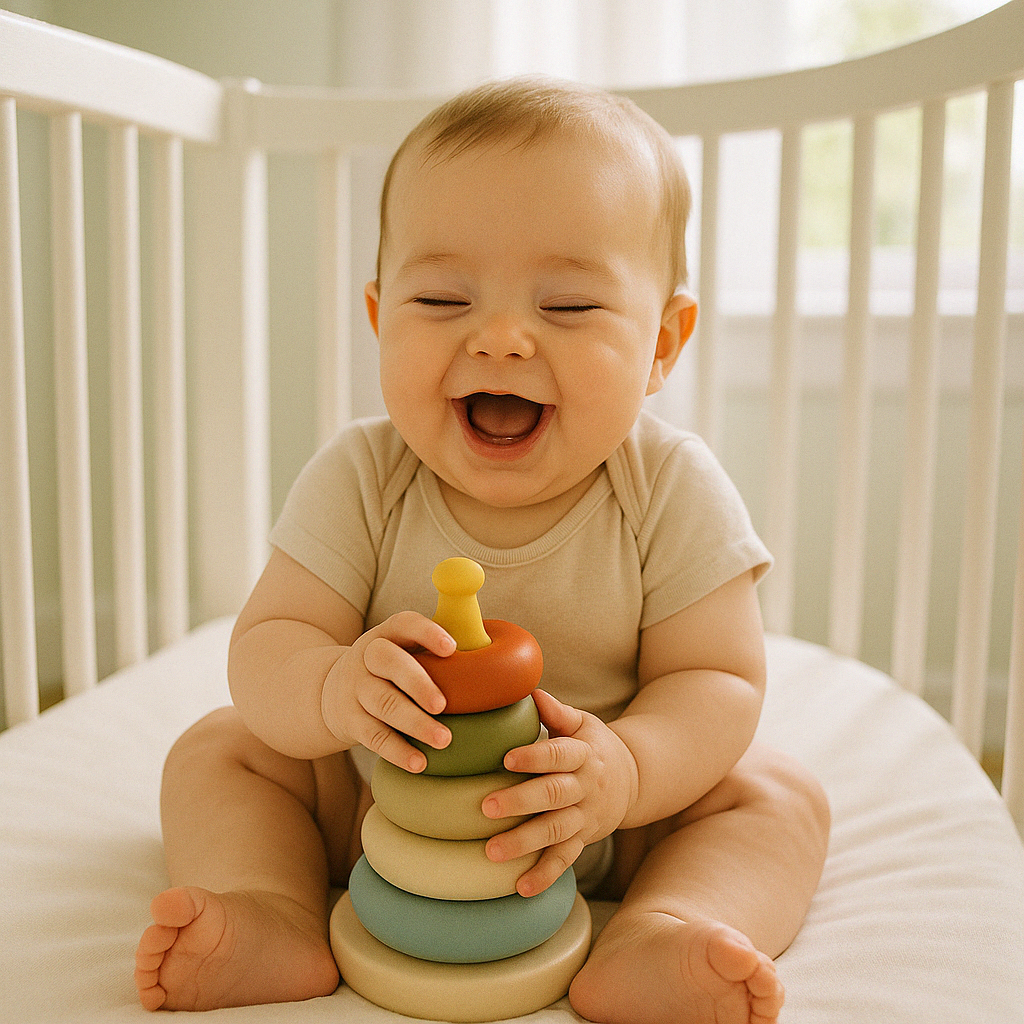 Make the crib a happy place during awake time too!
Make the crib a happy place during awake time too!
Gentle Ways to Make the Move (No Tears Required... Hopefully)
Look, if "cry-it-out" makes your stomach clench, you don't have to do it. There are plenty of gentle, responsive ways to help your baby adjust. Pick one that feels right for your family and commit to being consistent.
Method 1: The Toe Dip (Gradual Introduction)
Think of this as easing them in, not throwing them in the deep end. Great for younger or more sensitive babies.
- Nap Attack: Start with just the first nap of the day in the crib. Naps can feel less intimidating than the long stretch of night. Keep everything else the same (bassinet/co-sleeping for other sleep).
- Routine is Queen: Do your full, calming bedtime routine (bath, PJs, feed, story, song – whatever works for you) right there in the nursery, ending by placing baby in the crib drowsy but awake.
- Crib-Side Comfort: If fussing starts, try soothing without picking them up first. A gentle hand on their chest, some soft shushing. If they get really upset, pick them up, calm them down, but try really hard to put them back down before they're fully asleep. Lather, rinse, repeat.
- Expand the Empire: Once that first nap is consistently happening in the crib (give it a few days!), try adding the second nap. Once all naps are conquered, use the same approach for nighttime.
Method 2: The Grand Finale (Consistent Routine Finish)
This method banks on the power of a predictable routine, making the crib the clear final destination.
- Nail the Routine: Seriously, make it predictable. Bath, massage, PJs, feed, book, song – whatever your sequence, do it the same way, every time. It's like a secret code for "sleep is coming."
- Location, Location: Do the last few steps of the routine in the nursery, near the crib. Dim lights, white noise on. Set the mood.
- Drowsy But Awake: This is the magic phrase. You want them relaxed, eyes heavy, maybe even starting to drift... but aware they're going into the crib. This is how they learn to connect the dots themselves.
- Soothe & Settle: If tears happen (and they might!), use your chosen comfort technique (patting, shushing, maybe quick pick-ups) until they're calm again, then place them back down awake. Consistency here is your superpower.
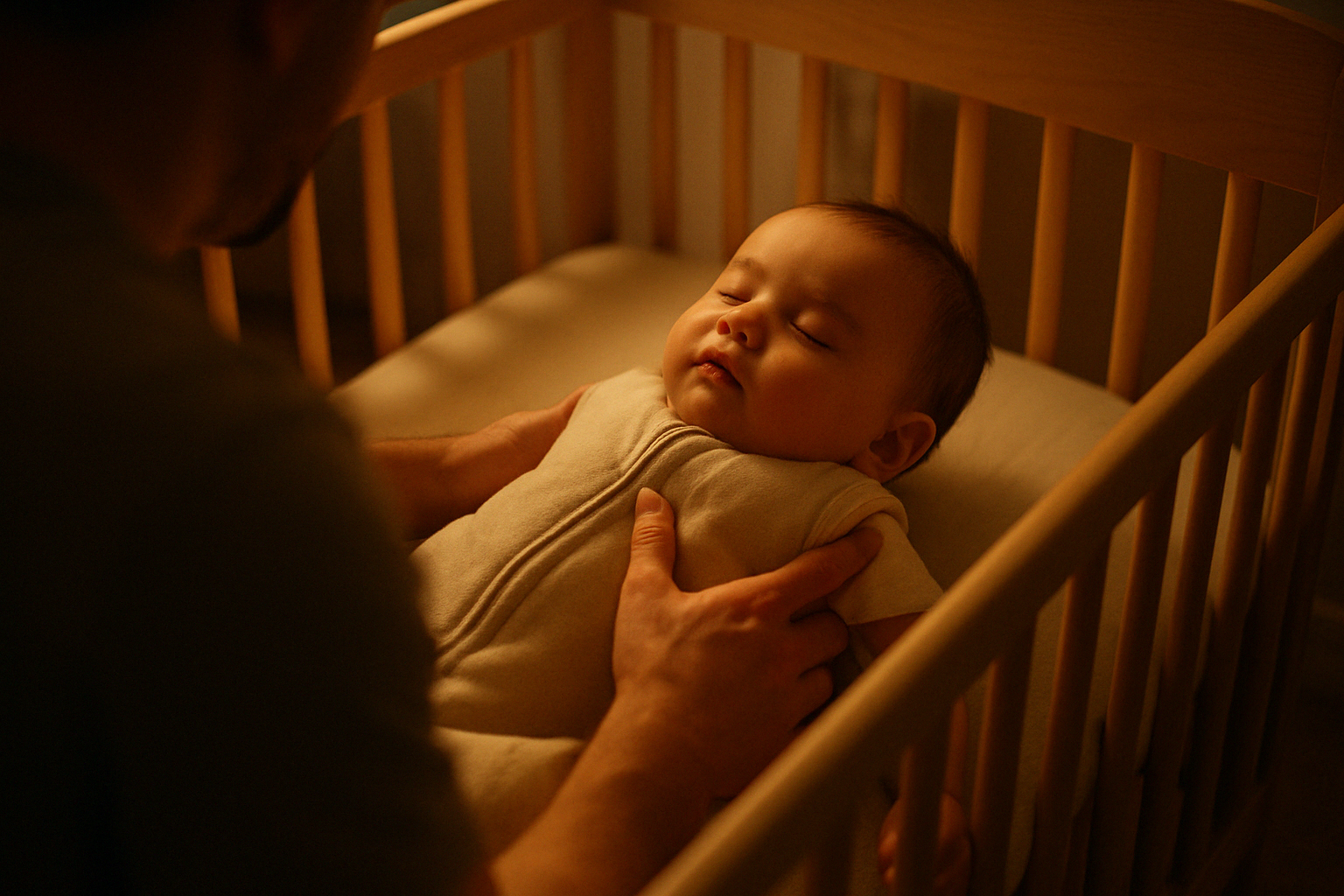 The "drowsy but awake" placement is key for learning independent sleep.
The "drowsy but awake" placement is key for learning independent sleep.
Method 3: The Reassurance Loop (Pick Up, Put Down)
This one offers lots of physical comfort while still reinforcing that the crib is the place for sleep.
- Drowsy But Awake: Place baby down sleepy but aware.
- Pause: Give them a minute. Sometimes they fuss a little and then settle. Don't rush in immediately.
- Crying = Cuddles: If it escalates to real crying, pick them up right away.
- Calm, Not Comatose: Soothe them until the crying stops and they're calm... but stop before they fall asleep in your arms. This is crucial.
- Back Down: Gently place them back in the crib.
- Repeat (and Repeat): Be prepared – the first few nights might involve doing this dozens of times. It feels endless, but the message is: "I'm here for you, and sleep happens here."
Method 4: The Slow Fade (Chair Method)
Often better for slightly older babies (maybe 6+ months), this involves being present but gradually giving them more space.
- Chair by the Crib: After putting baby down drowsy but awake, park yourself in a chair right next to the crib. Offer quiet verbal reassurance ("Mommy's here," "Time for sleep") and maybe a gentle pat, but try to avoid picking them up unless they're truly hysterical.
- Inch by Inch: Every few nights, scoot your chair a little further away from the crib. Keep offering verbal comfort.
- Doorway Duty: Eventually, you'll be sitting near the doorway.
- Mission Accomplished: The goal is to eventually be able to leave the room after putting them down, knowing they have the skills to drift off.
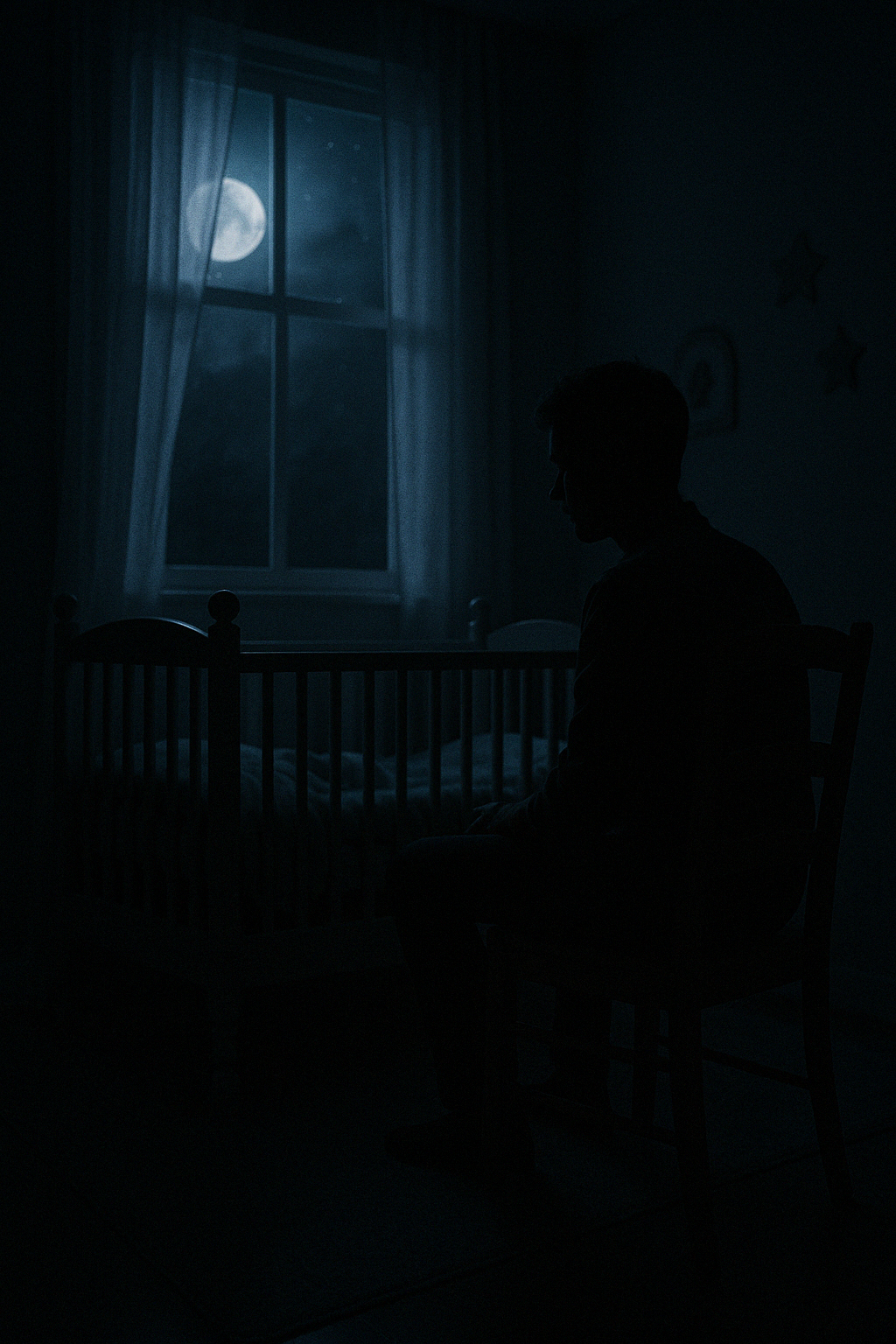 The Chair Method requires patience, offering comfort from a gradually increasing distance.
The Chair Method requires patience, offering comfort from a gradually increasing distance.
Help! My Baby Still Hates the Crib! (Troubleshooting)
Okay, so you're trying, but it's still a struggle. Let's troubleshoot:
- Instant Tears Upon Entry:
- Could be: Separation anxiety kicking in, maybe they weren't quite drowsy enough, or just plain old "Hey, this isn't where I usually sleep!" protest.
- Try This: Double down on happy awake time in the crib. Really nail that "drowsy but awake" sweet spot. Offer tons of cuddles and reassurance before the put-down. Stick firmly to your chosen method (like Pick Up, Put Down).
- Falls Asleep Fine, Wakes Up Screaming 45 Mins Later:
- Could be: Trouble connecting sleep cycles (super common!), needing you to recreate how they fell asleep initially, genuine hunger, or discomfort (teething, too hot/cold).
- Try This: The Pause! Wait a few minutes before intervening – sometimes they surprise you and go back to sleep. If not, use your exact same gentle method for these wake-ups as you do at bedtime. Check for obvious issues like hunger or a dirty diaper. Is the room really dark and the white noise consistent?
- Crib Naps are a Joke (Like, 20 Minutes Max):
- Could be: Daytime sleep cycles are harder to link, room isn't dark enough (sunlight is a powerful wake-up cue!), maybe they're overtired going into the nap.
- Try This: Make that room a black hole for naps. Watch wake windows like a hawk – an overtired baby fights sleep harder. Try resettling with your method when they wake early, but also accept that sometimes short naps just happen, especially during transitions.
- The Crib is Lava (Seems Genuinely Scared):
- Could be: Negative association forming, maybe separation anxiety is high.
- Try This: Dial up the positive awake time in the crib – make it the funnest place ever (when they're not sleeping). Use the "wear the sheet" trick. Stay physically close and offer lots of calm, verbal reassurance when putting them down.
 Remember to take care of yourself too! It's okay to feel frustrated.
Remember to take care of yourself too! It's okay to feel frustrated.
The Real Magic Ingredients: Patience & Consistency
I know, I know. You're tired of hearing it. But honestly, these are the two things that make or break the crib transition.
- Stick With It: Pick a gentle method that resonates with you and give it a solid 1-2 weeks before throwing in the towel. Chopping and changing confuses your baby (and you!). Make sure anyone else helping with sleep is using the same approach.
- Embrace the Slow Burn: Some babies click in a few days. Others take weeks. It's rarely a straight line – expect good nights and bad nights. This is normal.
- Check Your Expectations (and Breathe): It's okay to be exhausted and want to cry sometimes. Lean on your partner, call a friend, step away for five minutes if you need to. Remind yourself this is a phase. Focus on tiny improvements.
- High Fives for Small Wins: Did they fuss for only 10 minutes instead of 20? WIN! Did they sleep one whole hour in the crib for a nap? AMAZING! Acknowledge the progress, however small.
You Really, Truly Can Do This
Moving your baby to the crib is a marathon, not a sprint. It's about teaching a new skill, creating a safe space, and trusting the process. By setting the stage, choosing a method that feels right, and layering on buckets of patience and consistency, you'll get there.
Be kind to yourself. Trust your instincts. Respond with love. You're giving your baby (and yourself!) the gift of safe, independent sleep. And before you know it, you'll be peeking at the monitor, watching your little one snoozing peacefully in their crib, and maybe, just maybe, getting some well-deserved rest yourself.
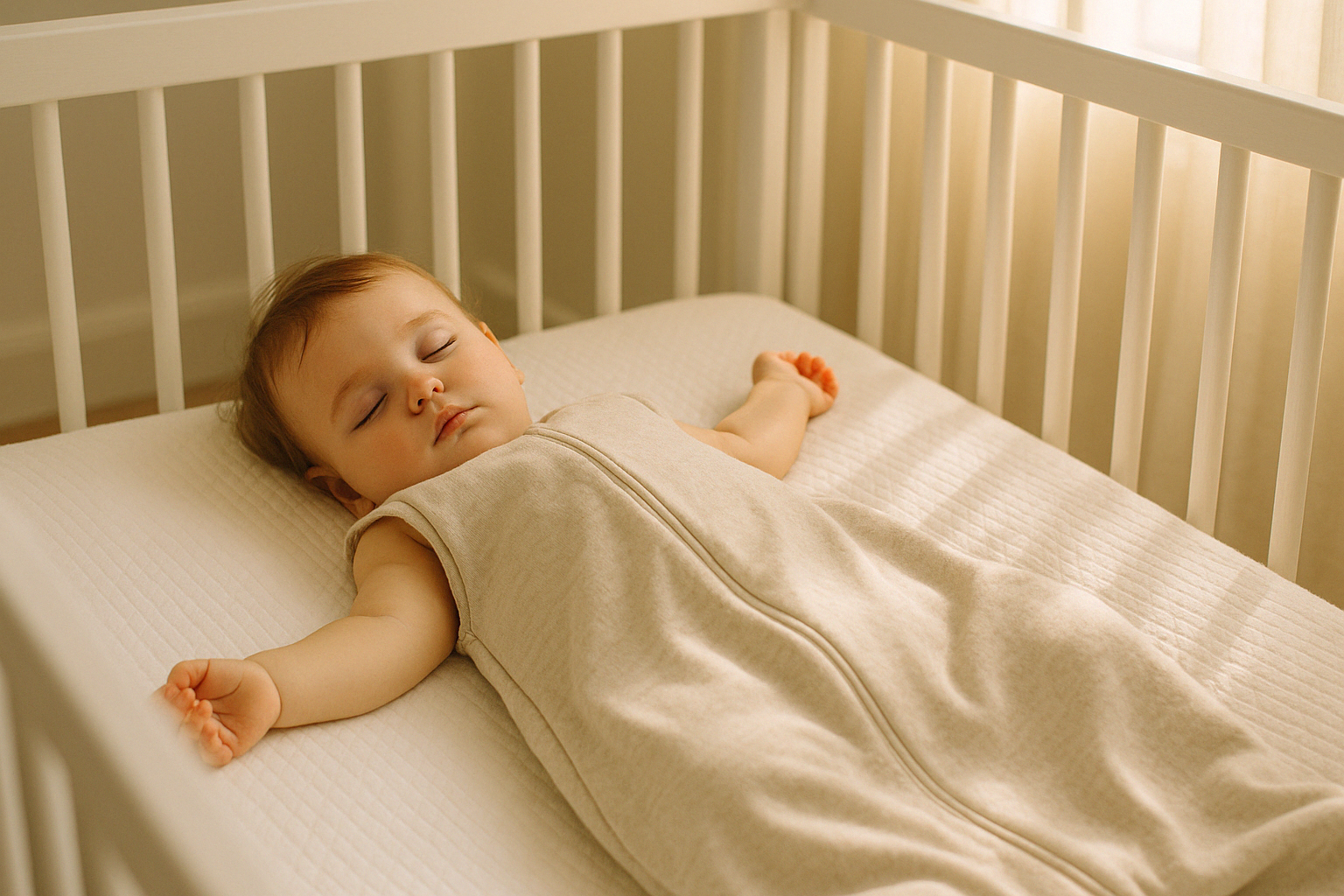 Success! A peacefully sleeping toddler in their own safe space.
Success! A peacefully sleeping toddler in their own safe space.
What worked (or didn't work!) for your crib transition? Share your wisdom in the comments – we're all in this together!
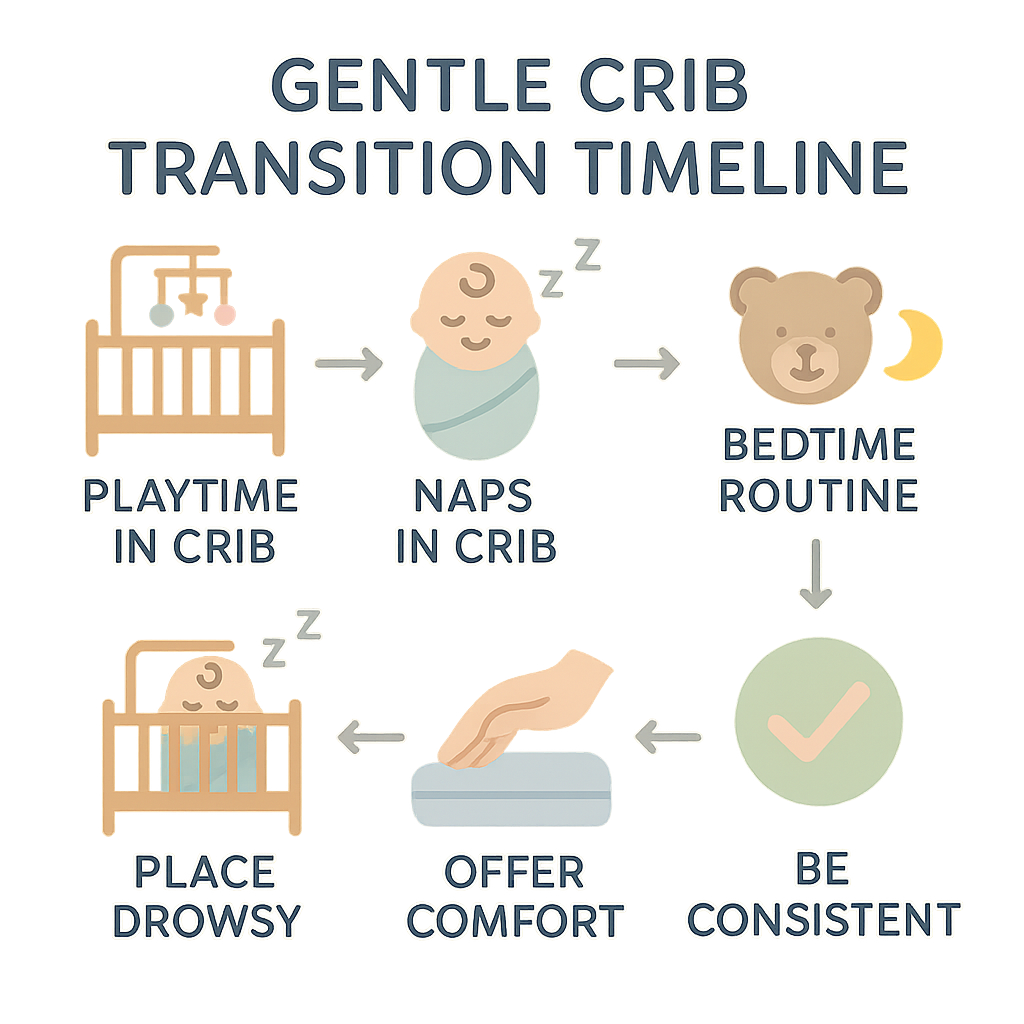 A visual guide to the gentle steps involved in the crib transition.
A visual guide to the gentle steps involved in the crib transition.

Olivia Green
Practical Reviews & Everyday Tips
Olivia is all about real-world testing and practical advice. As a busy mom, she puts products through their paces, focusing on durability, value, and how well they fit into the chaos of everyday family life.
More articles by Olivia GreenYou Might Also Like

Baby Sleep Solutions: Gentle Ways to Help Your Newborn Sleep Better
Real-world tips and product recommendations (like blackout curtains, sound machines, sleep sacks) from a parent who's been there. Gentle strategies to improve newborn sleep.
Read Article
Sleep Sacks vs. Swaddles: A Real Parent's Guide to Baby Sleepwear
Confused about swaddles vs. sleep sacks? A parent breaks down when to use each, top picks (like Kyte, Love To Dream), safety rules (especially rolling!), and making the transition.
Read Article